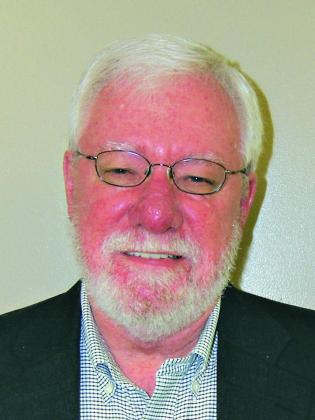
Jim Bradshaw
Worry over the loss of the French culture in south Louisiana is no new thing. Nearly 80 years ago, there was enough concern that 3,000 people came to a big meeting in Abbeville to try to figure out what to do about it. It was put together by a remarkable woman who promoted far more than the language.
The Lafayette Advertiser called the meeting in April 1940 “a pivotal event in the organized movement to perpetuate the French language, customs, and traditions” in south Louisiana.
It was organized by Louise Olivier and brought together French speakers from Vermilion, Iberia, St. Landry, Lafayette and St. Martin parishes who wanted to “create confidence and pride in the minds and hearts of the people in regard to their French heritage and to point out the commercial, professional, and cultural advantages of a bi-lingual education.”
The newspaper article described Olivier as a field representative of the Louisiana State University Extension Department, but her concern—and enthusiasm — went far beyond simply preserving the language. She was also an entrepreneur and promoter who, in the words of her great-niece Yvonne Olivier, “roamed south Louisiana for 20 years in search of handicrafts she could market to the world.”
Louise Olivier, who was known to her friends as LuLu, was born in Arnaudville in 1906 and died too young in 1962. Her undergraduate degrees in music and French were from the Southwest Louisiana Institute (UL today) and her master’s degree was from LSU.
She began to formally promote the Louisiana French culture in 1938, when she was given a two-year job by the General Education Board, one of John D. Rockefeller’s philanthropies. The goal of the board was to find ways for “young and old” to be “taught in practicable ways how to make rural life beautiful, intelligent, fruitful, recreative, healthful, and joyous.”
LuLu’s job was to do those things for the French-speaking people of Louisiana.
One of the things she did toward that end was to host Assemblies Francais, such as the one in 1940 in Abbeville, during which “Acadian French people from many parishes would assemble in a central location to sing, dance, and tell folk tales,” according to an account by Pamela Rabalais-Vinci, an instructor in LSU’s department of textiles, apparel design and merchandising.
Several years ago, Pamela came across boxes of stuff that had been gathered by Olivier as part of an Acadian Handicraft Project she began in 1942. Items ranging from woven goods and clothing made by hand to palmetto fans had been stored away after her death and all but forgotten.
According to archival materials at LSU, “Through the promotion of handicrafts, folk festivals, and the instruction of the French language, Olivier strived to demonstrate the importance of preserving a culture which had been suppressed by the State of Louisiana in the early part of the 20th century.
“Although [Olivier’s] original intent was to preserve the French language in Louisiana, [she] realized that the most effective channel to perpetuate the preservation of the language and culture was to promote Acadian handicrafts. The Acadian Handicraft Project encouraged the production of handicrafts by furnishing a sales outlet for the artisans’ merchandise.”
But not just any merchandise. The items, in her view, represented the heritage of a people, and they needed to be done right if they were going to carry a little blue and while label identifying them as authentic.
A letter to a seamstress tells that story succinctly enough: “That little label that you sew on each garment is supposed to be put only on perfect garments,” LuLu wrote. “It really hurts me when you send me a labeled garment that is badly made.”
As the project grew, Olivier traveled around the state and to other parts of the nation to promote the handmade goods and the people who created them. She sometimes described herself as a “marchand de boite,” one of the old-time peddlers who walked country roads peddling wares from a box he carried on his back. I don’t think she actually did that, but the image seems to fit.
As they dug deeper into LuLu’s project, Rabalais-Vinci and Yvonne Olivier interviewed more than a dozen people who knew her and participated in the program. One of them was Mary Alice Fontenot, who said Olivier encouraged her to write the world famous Clovis Crawfish books as a means to present a positive image of south Louisiana.
Another interview was with the nationally known weaver Gladys Clark, who said LuLu’s mission was a simple one.
“She just wanted to keep the Old French alive,” Clark said. “She didn’t want to see it die.”
A collection of Jim Bradshaw’s columns, Cajuns and Other Characters, is now available from Pelican Publishing. You can contact him at jimbradshaw4321@gmail.com or P.O. Box 1121, Washington LA 70589.
